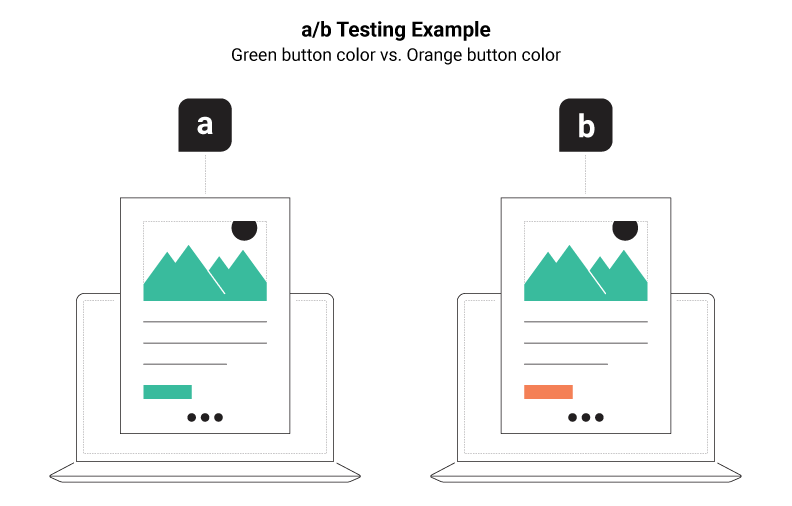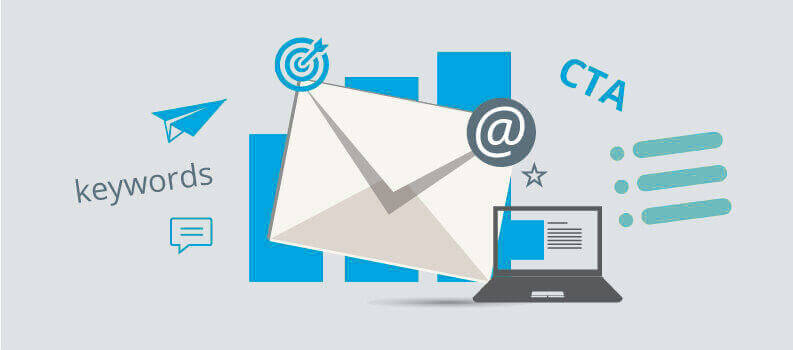You are newer to marketing. One term you hear a lot (so you know it’s important) is a/b testing.
So, what is a/b testing?
Why is it important to your work?
How can it help you improve your marketing efforts?
Definition of a to b testing
At its most basic (which is all we’ll be discussing here) a/b testing refers to comparing two versions of something in an effort to determine which one received better results. For instance, you could compare two subject lines against each other to see which one generates more opens from your target audience.

There are several variations of this term as it relates to marketing, but know that all of the following terms generally mean the same thing and may be used interchangeably within this blog:
a/b testing
a to b testing
split testing
bucket testing
While it certainly isn’t anything new—in fact, a/b testing for science has been around for nearly 100 years—the concept can feel overwhelming when you first get started.
While initial a to b testing may feel extensive, performing them regularly will help you become more focused in your marketing efforts. That’s because every answer will help you shift from an “I think” mentality regarding your audience to an “I know” mentality driven by information or data received back from your tests.
How a to b testing works
Let’s return to our question of what is a/b testing using once again the example of the subject line.
Consider that you create an email offer for 25% off a product or service. Every single element of your email, including:
- Branding
- Design elements
- Content
- The offer itself
- Contact information
Remains exactly the same. As any one of these elements could affect the outcome of your a to b testing, it’s incredibly important to only shift a single element for your audience. In this case, the subject line.
Therefore, you will send the exact same email to your audience, splitting traffic among the different offers with some traffic receiving the following subject line:
Get 25% off any product or service! Details inside.
While the rest receives the following subject line:
We’ve created a special offer just for you!
From there, you can analyze your email open rates and click through rates to determine if there was a measurable difference.
Is your audience more motivated by a number—in this case the percent off being listed in the subject line?
Or do they prefer the mystery associated with the term “special offer” which gives no indication of how much or little they may ultimately save?
Further similar testing may help you determine the kind of subject lines that motivate your audience to take a desired action versus which subject lines remain unopened in their inboxes.
This information is important to collect from your audience because it can help you pinpoint behavior, improve your marketing efforts, and better achieve your sales and marketing goals over time.
It’s important to remember that a to b testing in marketing does not only apply to email. From the way your website is designed to the products and services you offer, a/b testing can provide you with information that is necessary to build your business.
Framework for a to b testing
Are you ready to perform your first a/b test? The following framework can help to ensure it is a success.

- Determine a field: There are likely many areas where you can a/b test within your business. Make a list of things you’d like to test, and hopefully optimize, using a to b testing. Then prioritize it. Some examples might include email, a particular sales page, or your online advertising.
- Establish goals: What are you wanting to gain from your split testing? Without knowing what you want to achieve, it will be impossible to measure success or lack thereof. Increased clicks, more purchases, and more time spent on your website are all examples of goals you may want to achieve.
- State what you think: Referred to as your hypothesis, this is the information that you believe to be true about your target audience. For instance, in the subject line example, you may think that your audience would be more inclined to click on a subject line that is mysterious versus one that is more up front in its offer.
- Create your test: Sometimes referred to as “variations” this is where you determine multiple ways to test the same idea. Oftentimes you’ll want to perform your a to b testing several times to ensure the data remains firm.
- Run your a/b test: Now it’s time to sit back, relax, and wait for the responses to come in that will prove—or disprove—your hypothesis. Give the data a reasonable amount of time, usually one to two weeks, to be collected based on what it is you’re testing so as to best determine the success of your experiment.
- Review results: What did your a/b test tell you? There may be a significant difference or there may hardly be a discernable difference at all. It will be up to you, as a marketer, to determine what the next a/b test will be to further prove or disprove the original hypothesis.
Follow this framework every time you decide to perform a to b testing. Once you’ve collected what you consider to be a reasonable amount of data on a particular marketing question, it’s time to move on and test a new element. For instance, in the email example, consider testing the internal layout of your email. Will a two-column email receive more clicks than a single-column email?
You can also move on to testing additional hypothesis you may have about your target audience. From how the colors you use influence their clicks to the way your navigation menu on your website affects purchases, there are hundreds of ways you can use a/b testing to optimize your marketing efforts and build your business.






